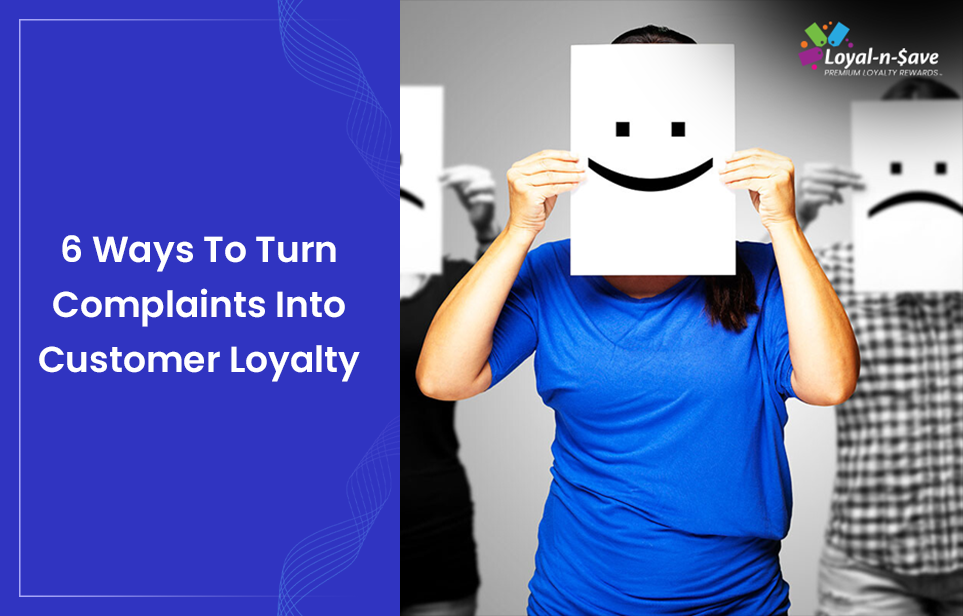6 Ways To Turn Complaints Into Customer Loyalty

1. Be Proactive
Give your customers multiple ways to provide you with feedback before they have the chance to complain. This allows you to get ahead of any potential problems. Collecting your customers’ e-mail addresses for your loyalty program gives you the opportunity to generate feedback through surveys. You can offer your customers loyalty reward points as an incentive for completing them. You can also use in store kiosks or QR codes on customer receipts to generate feedback through surveys.
Your sales associates should be readily available in your store to provide product information, to assist customers in locating items in your store, and to identify potential customer complaints before they occur. The steps you take to proactively resolve issues before they manifest into full-blown complaints can create customer loyalty.
2. Respond Promptly
It’s important to respond to negative customer feedback and reviews in a timely manner. Not only will ignoring them not make them go away, but online complaints left without a response create an open invitation for other customers to join in the complaining. However, responding promptly doesn’t mean responding hastily.
Take a little bit of time to review the complaint, but don’t leave the customer hanging in the meantime. Thank them for bringing the problem to your attention and let them know that you’d love to discuss it with them further. Providing customers with a direct number or e-mail address shows them you are invested in their satisfaction. Investigate the situation by getting employee accounts if possible, inspect the product in question, or analyze the service to see where friction has created the customer’s pain points.
It’s helpful to set a standard response time for acknowledging all customer comments, but particularly negative comments. A good goal is between 1 and 3 days to respond and resolve a customer’s complaint.
You also want to respond to a customer’s complaints before sending them new promotions because it sends the message that you care more about making a sale than their satisfaction. According to a consumer survey by Talend, “57% of consumers listed ‘having a negative review unaddressed while continuing to receive offers for similar products’ as the top reason they would break up with a brand.”
3. Respond Empathetically
When responding to negative customer complaints it’s important to avoid negative words like “can’t, don’t, or won’t.” Reframing responses in a positive manner by emphasizing the ways in which you can resolve the customer’s issue increases the likelihood that the customer will do business with you again.
Active listening can also be helpful in resolving a customer’s complaints in person or over the phone. It involves fully focusing on the person speaking and showing verbal and non-verbal signs of listening such as smiling, nodding, and making eye contact. Repeating key phrases the other person is saying and asking questions also demonstrate active listening.
It’s important to keep in mind that when you are responding to an online complaint you are speaking to more than just that customer. You are also speaking to many of your existing and potential customers who are intently reading your response. According to research byZendesk, “88 percent of customers have been influenced by online customer service reviews when making buying decisions.” Responding empathetically and resolving the customer’s complaint can foster brand loyalty with your existing customers and persuade new customers to shop at your store.
4. Find Mutually Beneficial Resolutions
Policies are very helpful for retailers, but there will be occasions when it is more beneficial to bend the rules to accommodate a customer that deserves special consideration. Customer service professionals should be well versed in your company’s policies and procedures, but they should also be able to evaluate customer complaints on a case by case basis.
It’s also important to identify customers during the process to assess whether they are loyal customers or if they have a history of complaints. Working with the customer to find a mutually acceptable resolution can build brand loyalty.
5. Follow Up
A follow up call or e-mail after a complaint is resolved demonstrates to the customer that you really care. Following up on a customer’s complaint not only builds loyalty, it can also prevent future complaints. The Customer Contact Council conducted a study of more than 75,000 people who interacted with call center representatives. This study found that “22% of repeat calls involve downstream issues related to the problem that prompted the original call, even if that problem itself was adequately addressed the first time around.”
6. Implement Changes
Customer complaints give retailers an opportunity to assess their policies and remove or change those that create friction in the customer experience which lead to customer complaints. For example, if many customers are all complaining about your return policy, it might be time to modify it. These changes once implemented and announced to all customers via your website, social media channels, and in store demonstrate your store’s commitment to customer satisfaction. This keeps customers loyal to your brand.
When faced with an issue in your store, most customers will simply walk out and never come back. Customers who willingly tell you about their negative experience are already primed for customer loyalty because they are giving you an opportunity to resolve their complaint.
Bill Gates said,
Your most unhappy customers are your greatest source of learning.
How you respond and what you learn from your customers’ negative experiences with your store can create loyal customers for life.
This article was written by Loyal-n-Save, an omni-channel customer loyalty solution for retailers looking to increase customer retention and new customer acquisition.
Posted on Mar 2, 2018





